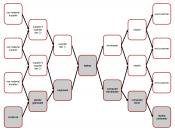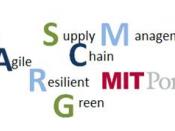1 INTRODUCTION
Globalisation of markets is a phenomenon that received much attention and has been debated at all business levels. In any globalisation process, distribution of goods and services between and within local industrial markets is of great importance. Supply chain management are the issues directly related to these general development trends. A global market is complex and rich in connectivity. It is continuously created and recreated; it is thus an effect of interaction. Thus, globalisation of markets interacts with globalisation of firms who act as buyers and sellers of goods and services. The development of supply chains and their management is, to an important extent, driven by the reorganization of distribution in globalisation of markets.
Source: http://www.supplychainonline.com
'Supply chain management can be defined as the management of materials and information both in and between facilities, such as vendors, manufacturing and assembly plants (Thomas and Griffin, 1996)'. It is inherently multidisciplinary and requires the efforts of both engineers including computer specialists and business managers.
The classification is based on what is being done in the universities and hence the terms of ENGINEERING SCHOOL and BUSINESS SCHOOL.
Supply chain management is the combination of art and science that goes into improving the ways in which company finds raw materials it needs to make a product or service, manufactures that product or service and delivers it to the customer. The five basic components of supply chain management are:
1) PLAN: This is the strategic portion of the supply chain management .one need a strategy for managing all the resources that go towards meeting the customer demand for product and service. A big piece of planning is developing a set of metrics to monitor the supply chain so that it is efficient, costless, delievers high quality and value to the customers.
2) SOURCE:...


